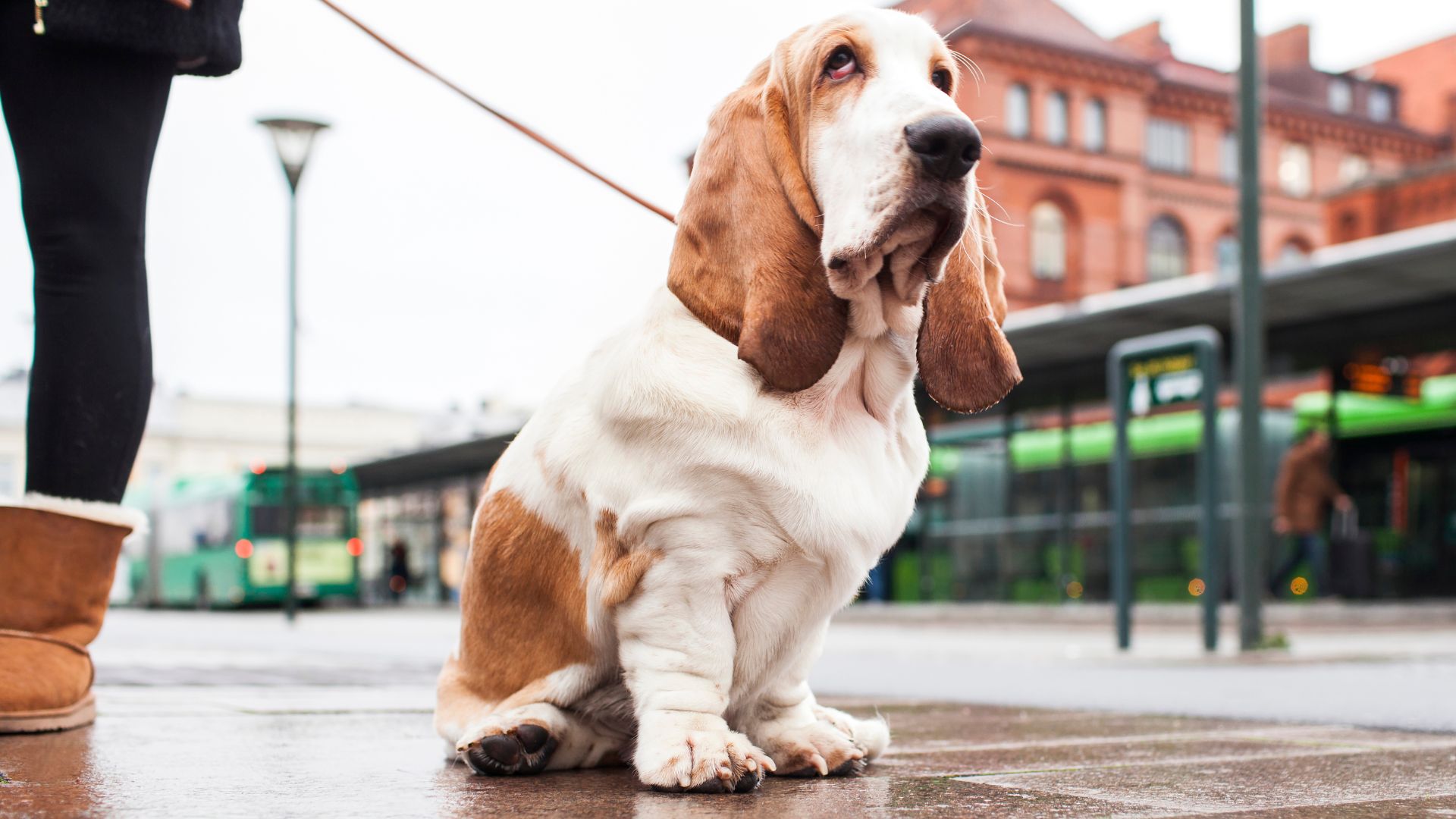Some dogs wear their personality on their sleeves—others let their ears do the talking. Long-eared dog breeds are the floppy-eared supermodels of the canine world, and their charm is impossible to ignore.
Whether it’s the soulful gaze of a Basset Hound or the soft, curtain-like ears of a Cocker Spaniel, these pups know how to tug at your heartstrings with every head tilt. But those iconic ears aren’t just for looks—they’re built for function.
Many of these breeds were originally bred for tracking scents, and those long ears help funnel smells right to their powerful noses. That’s right—your pup’s dramatic ear flaps are basically sniffing accessories.
Here, we’ll celebrate the dog breeds with the longest, most luxurious ears in the game. If you’re a sucker for floppy ears and velvet-soft head pats, these breeds are sure to win you over.
Warning: extreme levels of cuteness ahead—and possibly some extra ear-cleaning duties.
Dog Breeds With Naturally Long Ears
1. Beagle
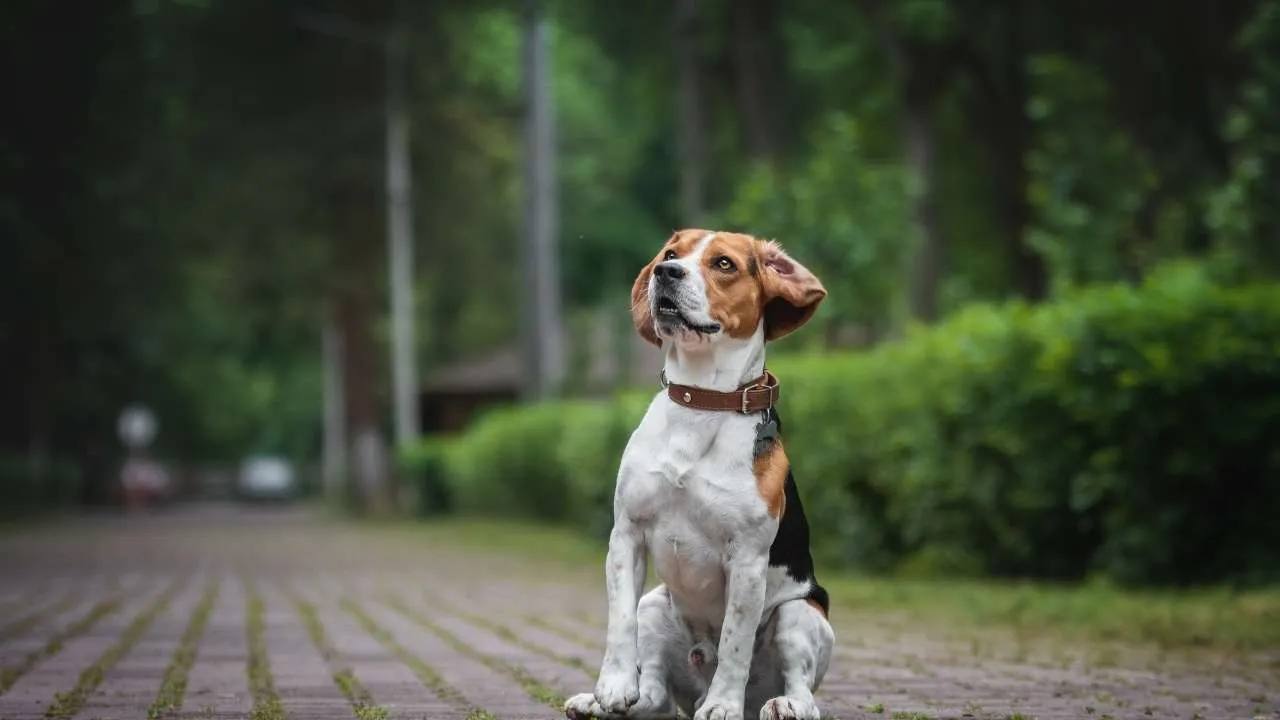
If Sherlock Holmes ever needed a canine sidekick, the Beagle would’ve been top of the list—minus the pipe and plus a pair of adorably long, floppy ears.
Height: 13–15 inches
Weight: 20–30 pounds
These pint-sized detectives are known for their powerful noses, endless curiosity, and, of course, those luxurious velvet drapes hanging from the sides of their heads. Yep, we’re talking about the ears. Big. Long. Floppy. And irresistibly pettable.
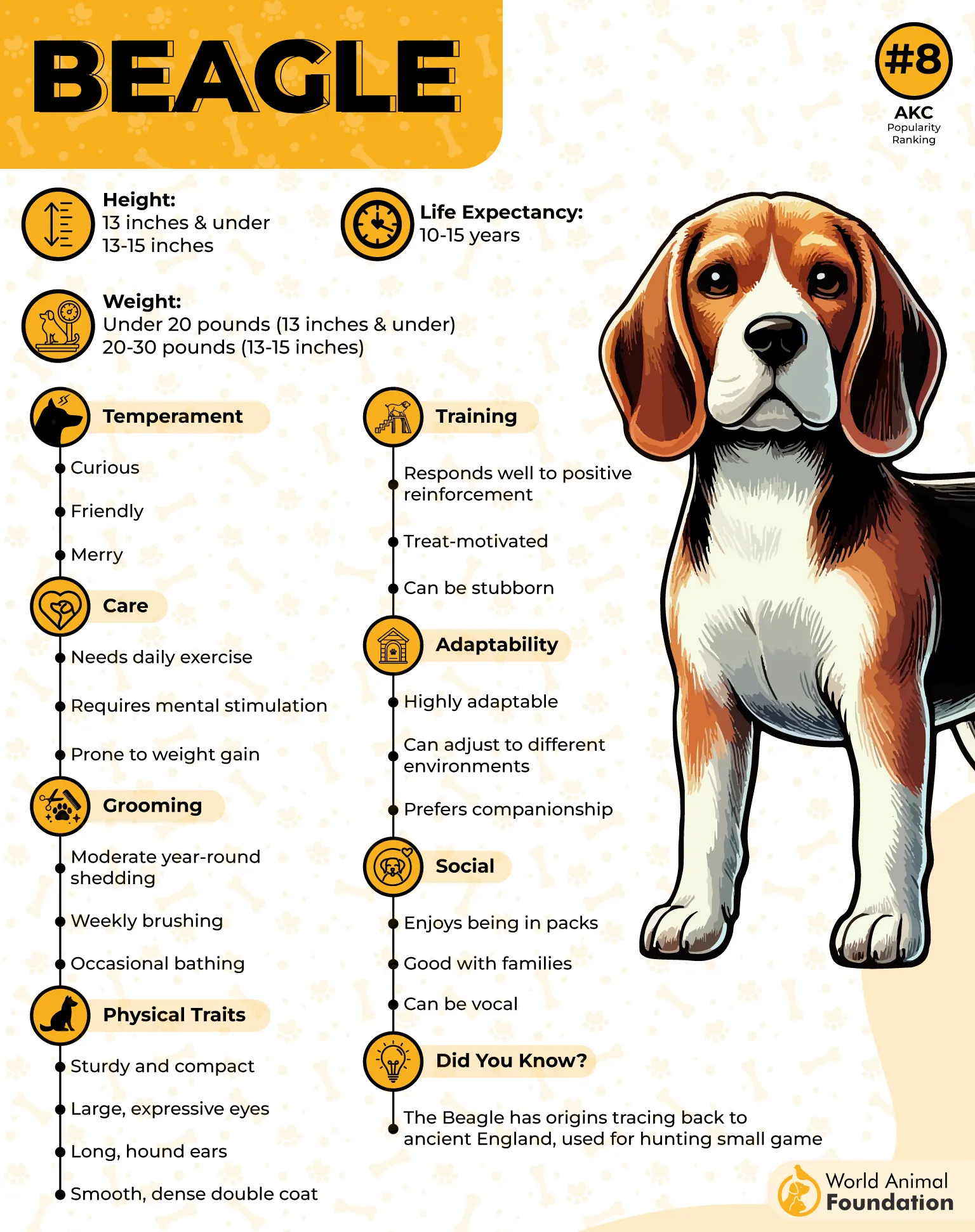
Beagles were originally bred for hunting small game like rabbits, and their long ears actually help them track scents better—they stir up the ground and waft smells toward their nose as they go. Basically, they come with built-in scent amplifiers. Who needs AirPods when you’ve got ears that practically touch the floor?
Beagle’s ears need a bit of extra attention. Since the ears fully cover the ear canal, airflow is limited, creating a warm, moist environment where bacteria and yeast can thrive. This makes Beagles more prone to ear infections, so regular ear checks and cleanings are essential to keep them healthy.
But don’t let their serious sniffer reputation fool you. Beagles are merry little souls—goofy, loving, and always down for an adventure (especially if snacks are involved).
They’re great with kids, love a good nap after a sniffing spree, and have the kind of expressive face that can guilt you into sharing your last bite of sandwich.
2. Cavalier King Charles Spaniel
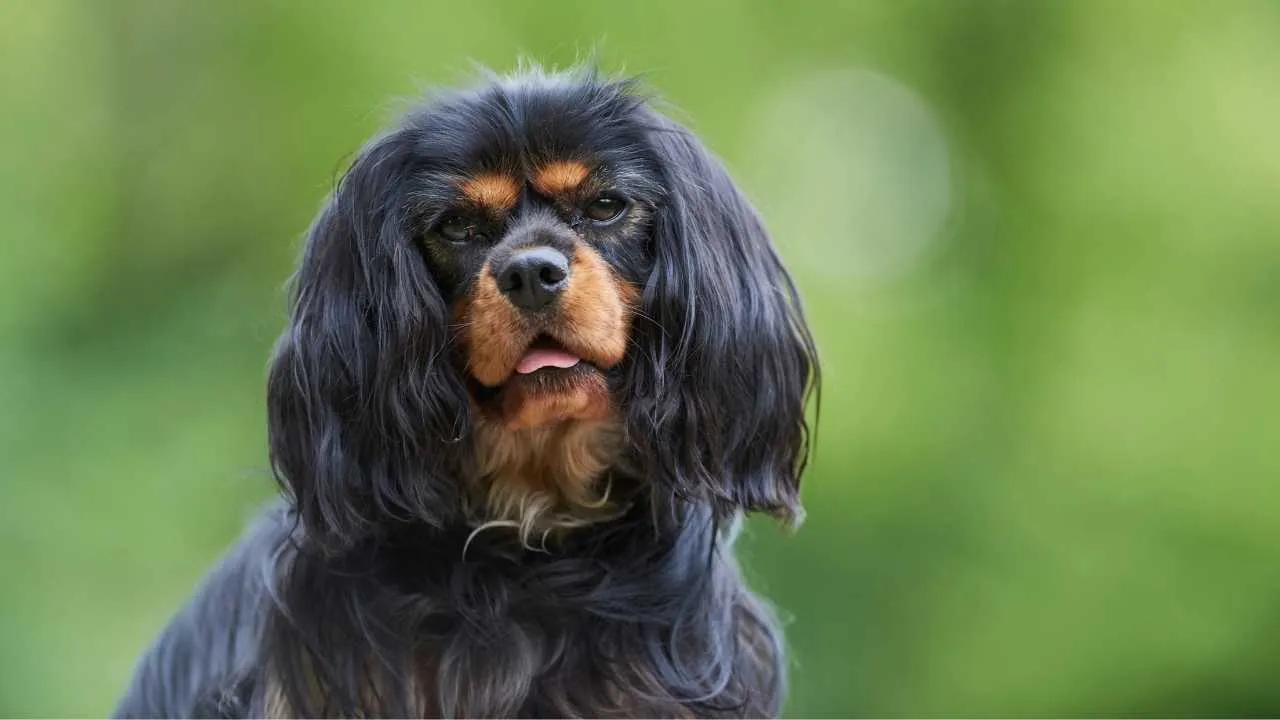
Imagine if a teddy bear and a Renaissance painting had a baby—that’s the Cavalier King Charles Spaniel.
Height: 12–13 inches
Weight: 13–18 pounds
Cavalier King Charles Spaniels were originally bred to cozy up on laps in chilly castles and during cold carriage rides. Their friendly and gentle temperament makes them a great fit for first-time dog owners. Today, they rank as the 14th most popular dog breed.
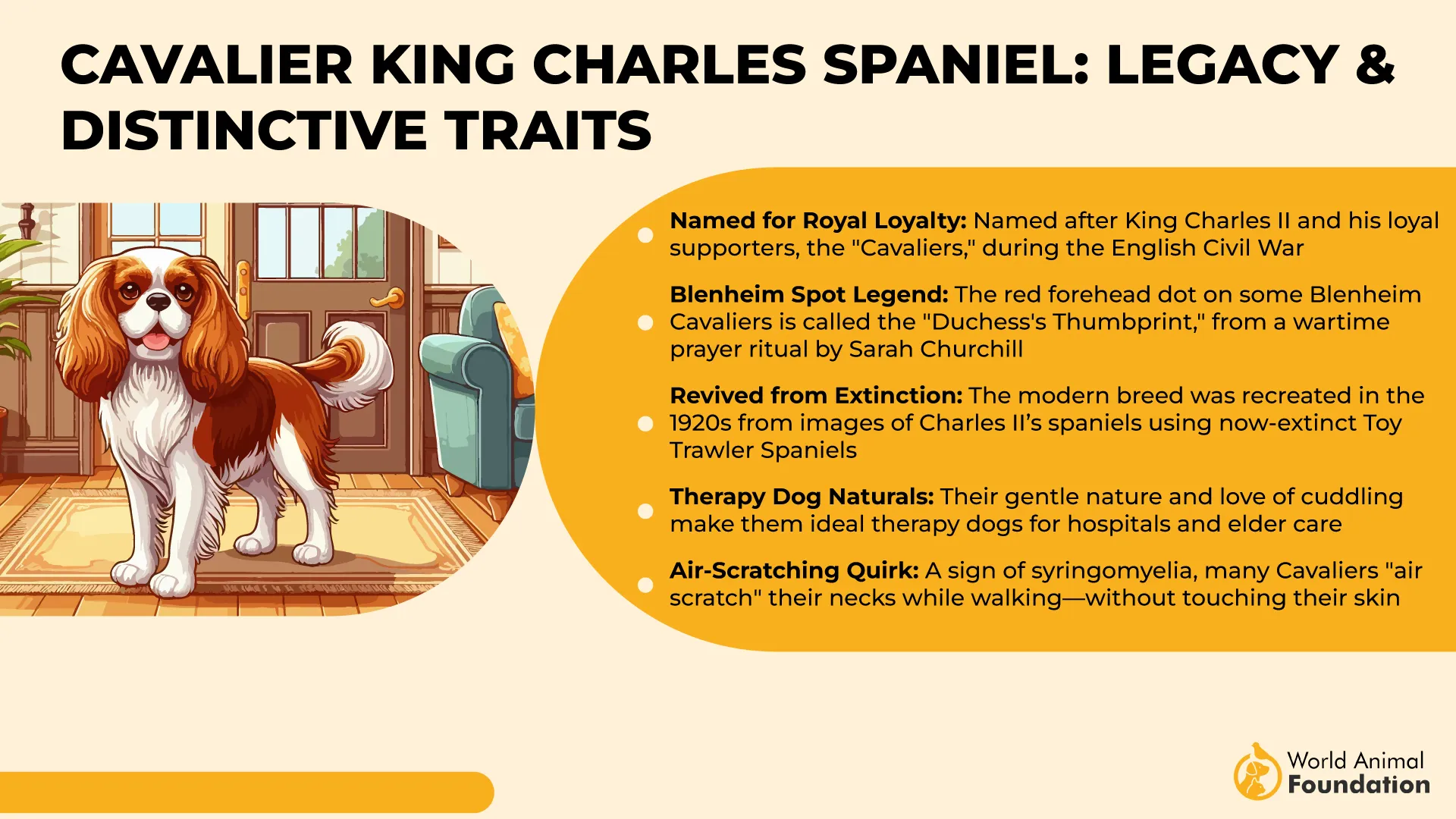
With their big, soulful eyes and those lush, silky ears that cascade like royal capes down their face, these dogs basically look like they stepped out of an aristocrat’s oil painting. And frankly, they act like it, too. (No shade—just facts.)
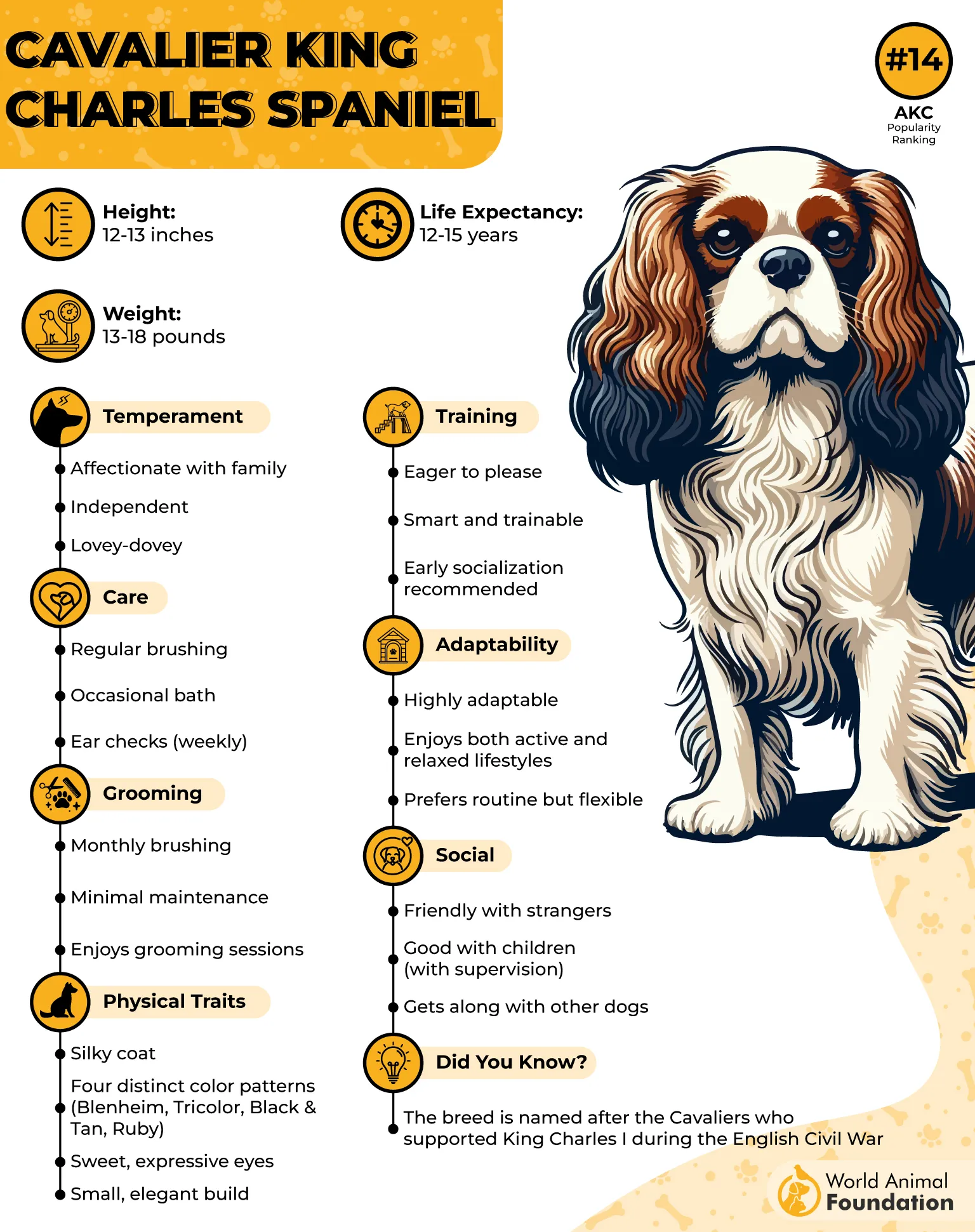
But don’t let the noble name fool you. Cavaliers are sweet, cuddly, and refreshingly un-snobby. They’d rather snuggle on the couch or follow you from room to room like a four-legged shadow than attend a royal ball. Their long ears? Pure elegance. And practical too—they scoop up compliments and crumbs in equal measure.
These Spaniels are people-loving, lap-warming charmers who thrive on attention, gentle play, and being absolutely adorable 24/7. Their long ears may look like they belong on a Paris runway, but they’re really just part of the Cavalier’s everyday glam.
Cavaliers require regular exercise and mental engagement, but once those needs are fulfilled, they’re content to relax and cuddle with their family. Known for their exceptional friendliness, they get along well with both families and strangers and adapt easily to various living environments.
However, it’s best not to let your Cavalier roam off-leash. Their curious noses might lead them to chase after intriguing scents, which could put them at risk of getting lost or injured. Having a securely fenced yard is ideal for keeping a Cavalier King Charles Spaniel safe.
3. Cocker Spaniel
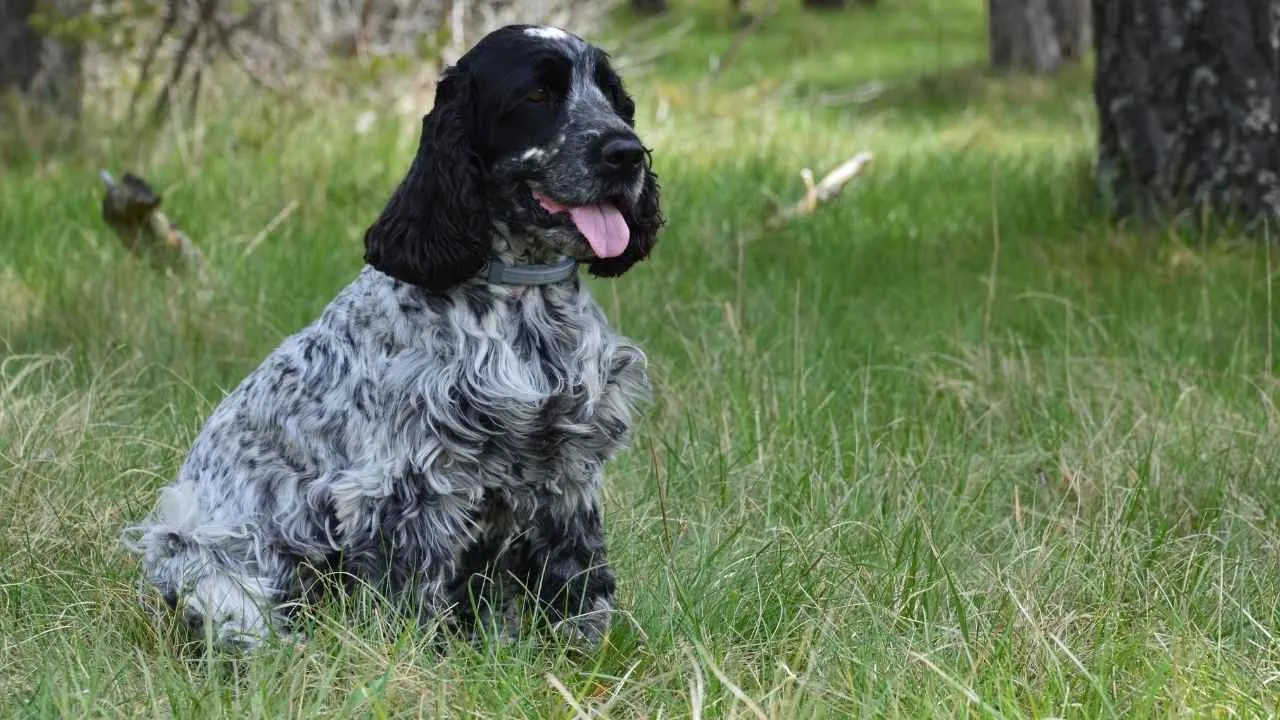
Height: 13.5–15.5 inches
Weight: 20–30 pounds
The Cocker Spaniel, often known as the American Cocker Spaniel, is adored worldwide for its big, round eyes, long ears, sweet expression, and playful nature. With those long, flowing ears that look like they belong in a slow-mo shampoo ad, Cocker Spaniels bring glamour and goofiness in equal measure.
Originally bred as bird hunters (particularly woodcocks—hence the name), these dogs have energy to burn, a nose for fun, and a soulful, melt-your-heart gaze that’ll have you handing over your sandwich without a second thought.
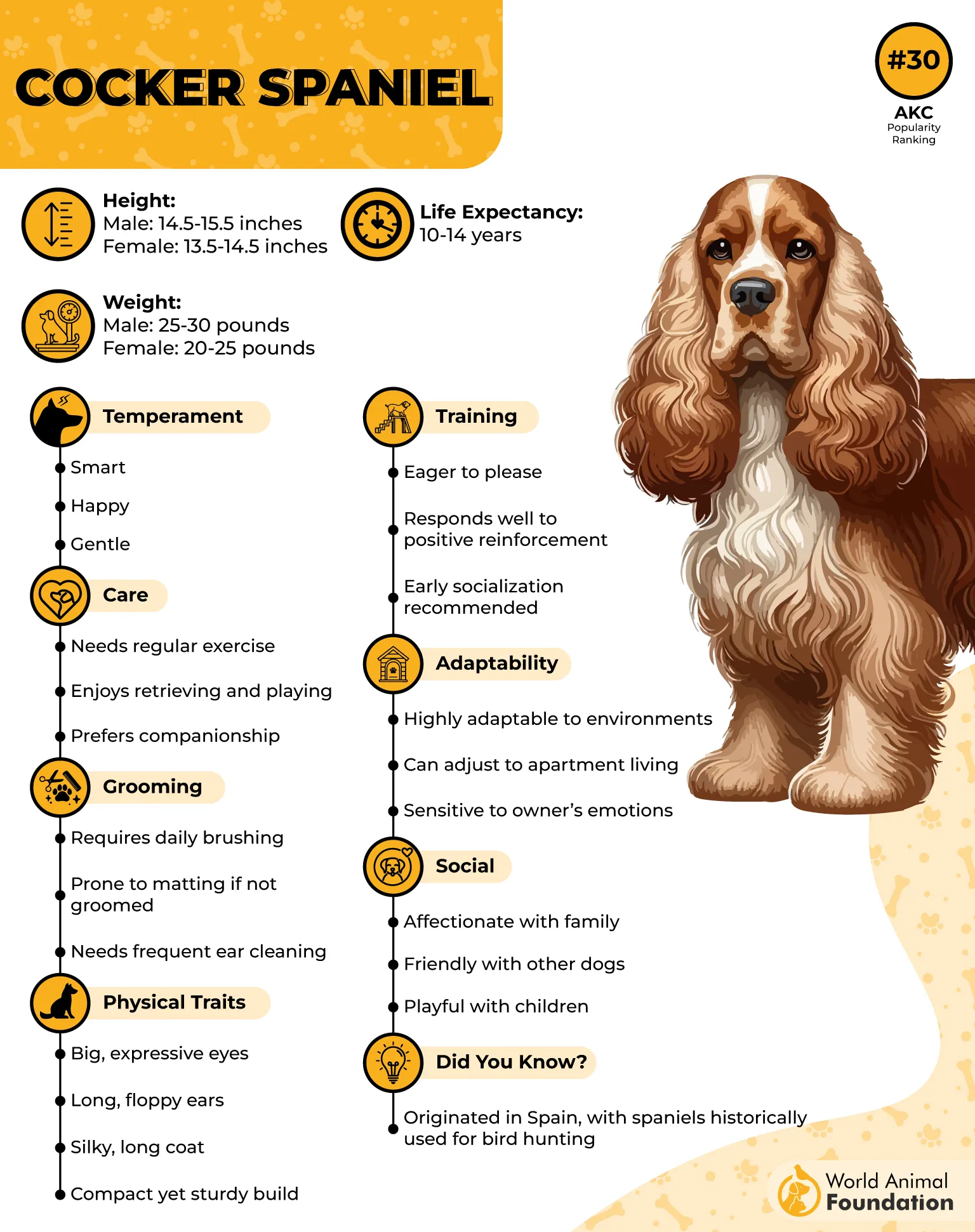
Their droppy ears aren’t just for looks—when they’re sniffing around, those long flaps help funnel scents right to their nose. It’s basically nature’s version of surround-sound sniffing.
But their personality? 100% sweetheart. Cockers are affectionate, sensitive, and loyal to the bone. They thrive on human interaction and don’t do well with being left out (or left alone). If you’re looking for a furry friend who’s equal parts beauty and bestie, look no further.
They make great companions for first-time pet owners, as well as adults and children. With an average lifespan of 10 to 14 years, they’re sure to be a loyal friend for many years.
4. Clumber Spaniel
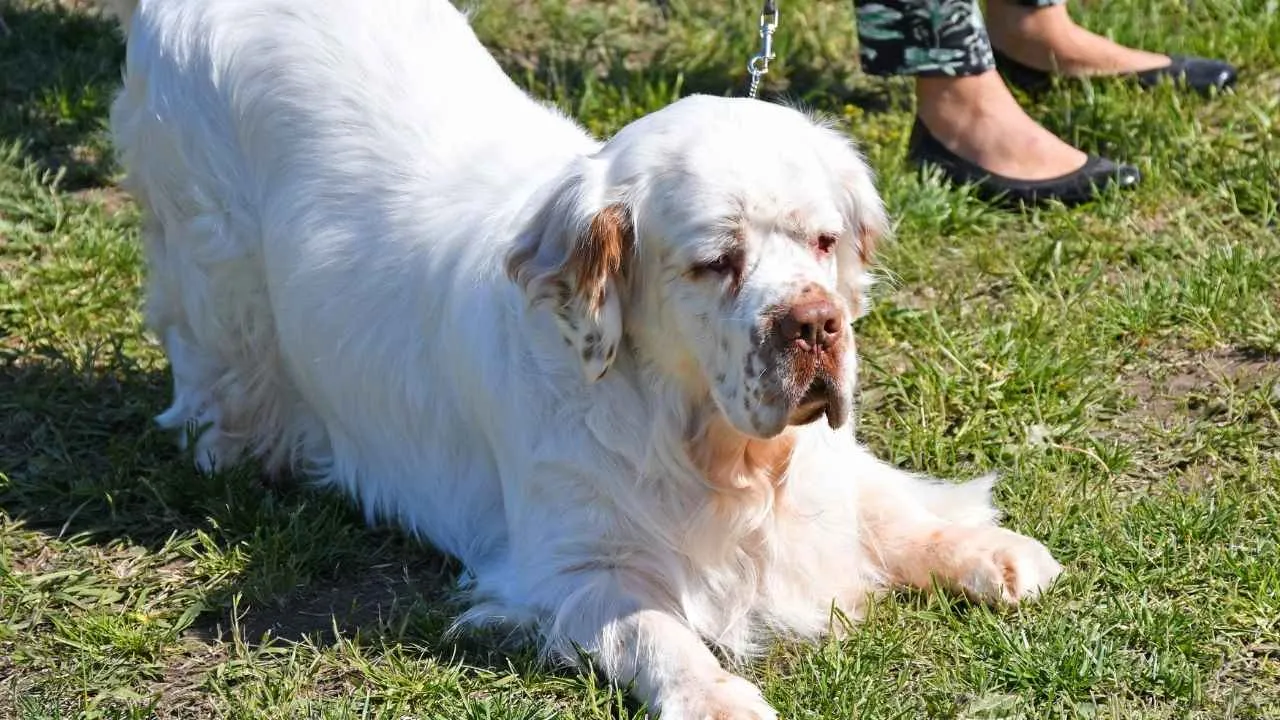
Height: 17–20 inches
Weight: 55–85 pounds
If a teddy bear and a loaf of brioche had a baby, you’d get the Clumber Spaniel. Known for their stocky build, soulful gaze, and gloriously droopy ears that look like someone gently draped two silky scarves on either side of their face, Clumbers are one of the most underappreciated ear models in the dog world.
Originally bred for bird hunting, these dogs are surprisingly stealthy despite their chunky waddle. Picture this: a Clumber quietly sliding through thick brush like a four-legged marshmallow, ears flopping with every determined step.
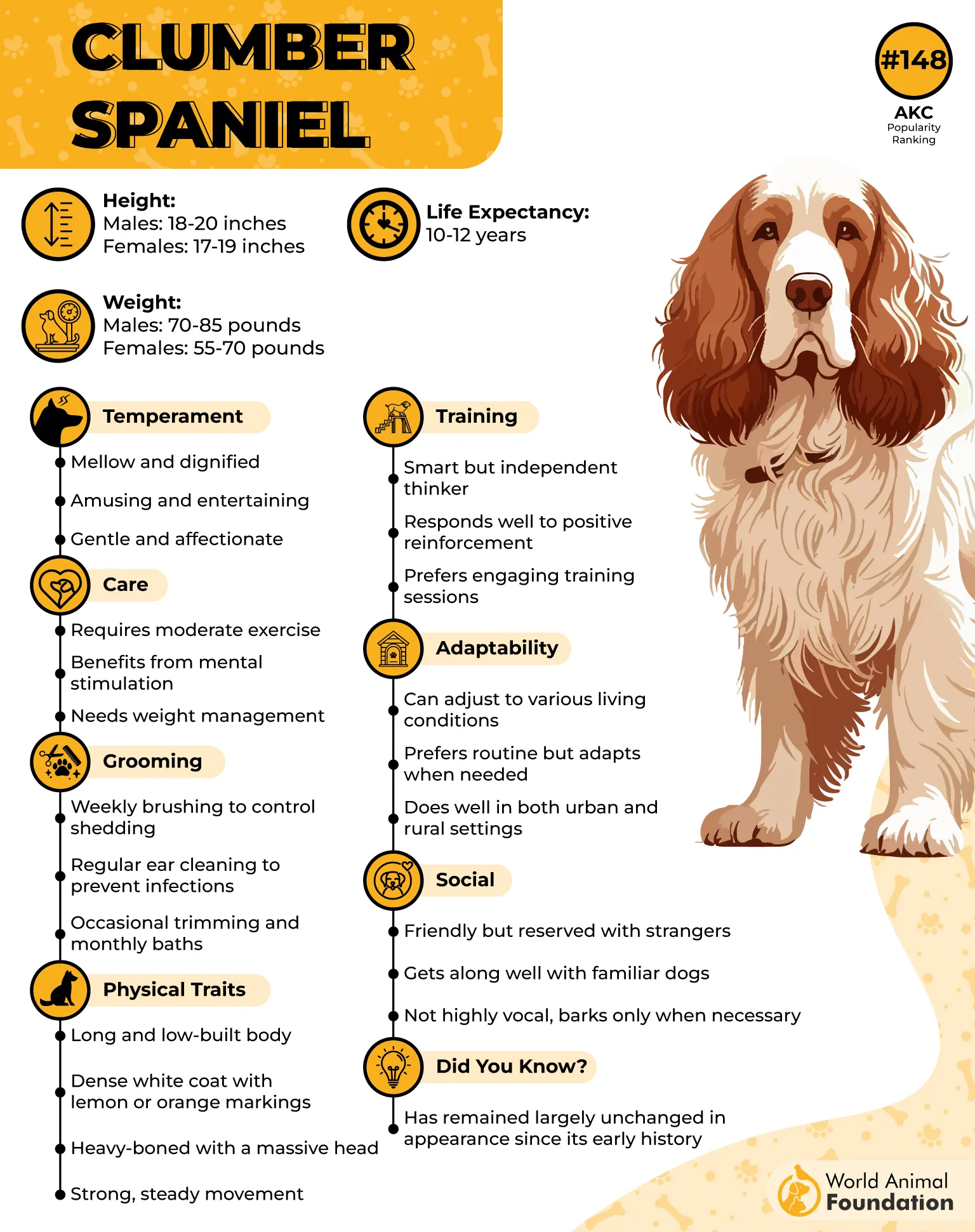
According to the American Kennel Club (AKC), they’re known as the largest of the AKC flushing spaniels. The Clumber is a dignified and calm hunting companion, once favored by royalty for its gentle nature and steady work ethic.
Nowadays, they’re far more likely to be found napping in the coziest corner of your couch, snoring softly while their ears make excellent pillows.
Don’t mistake their slow-moving style for laziness—they’re dignified. They’re the type who’ll walk, not run, and prefer lounging to lunging. But they’re loyal, loving, and oh-so-charming with a sense of humor as dry as their snore is loud.
While Clumber Spaniels can be somewhat cautious around strangers, they’re generally friendly and tend to bark only when there’s a real reason, making them less effective as watchdogs.
5. Basset Hound
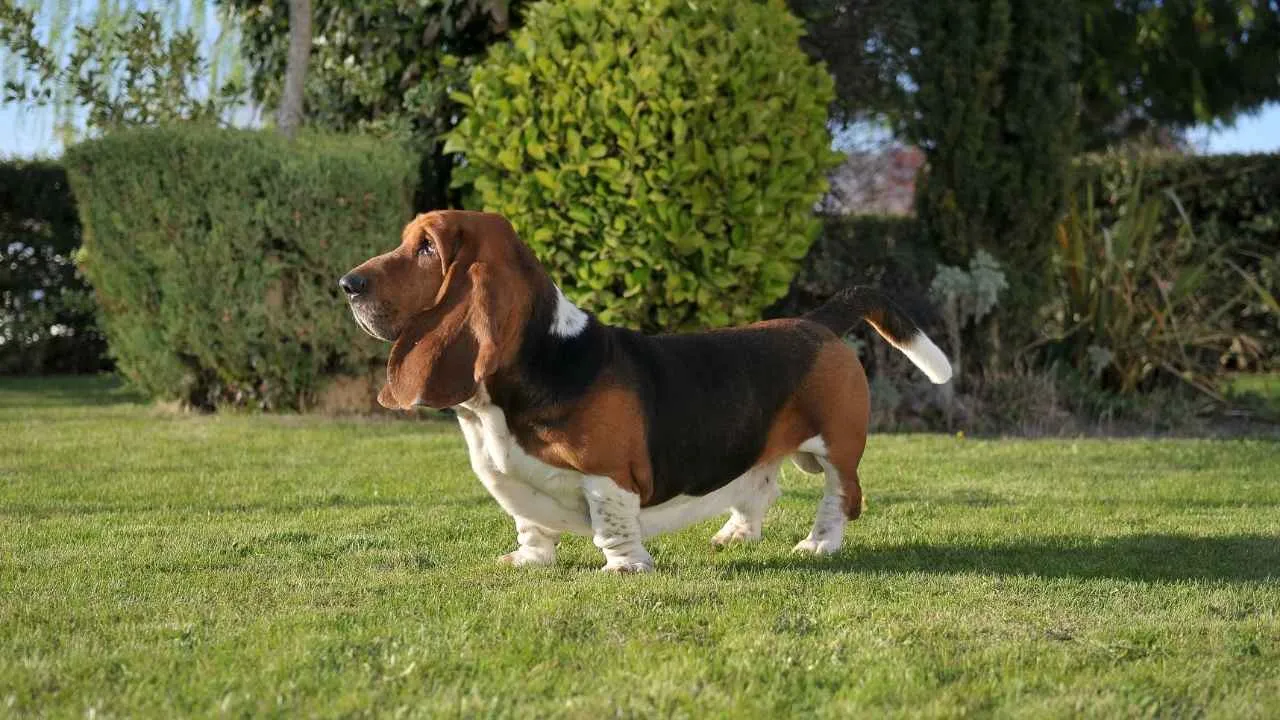
Height: Up to 15 inches (but built like a tank)
Weight: 40–65 pounds
Ah yes, the Basset Hound: a breed that looks like someone took a regular dog, stretched the ears, shrunk the legs, and gave it the saddest puppy eyes known to man. And it works. These dogs are built for attention (and tripping over their own ears).
With a nose second only to the Bloodhound, the Basset was bred to track scent trails for miles, slowly, methodically, and with as much dramatic flair as possible.
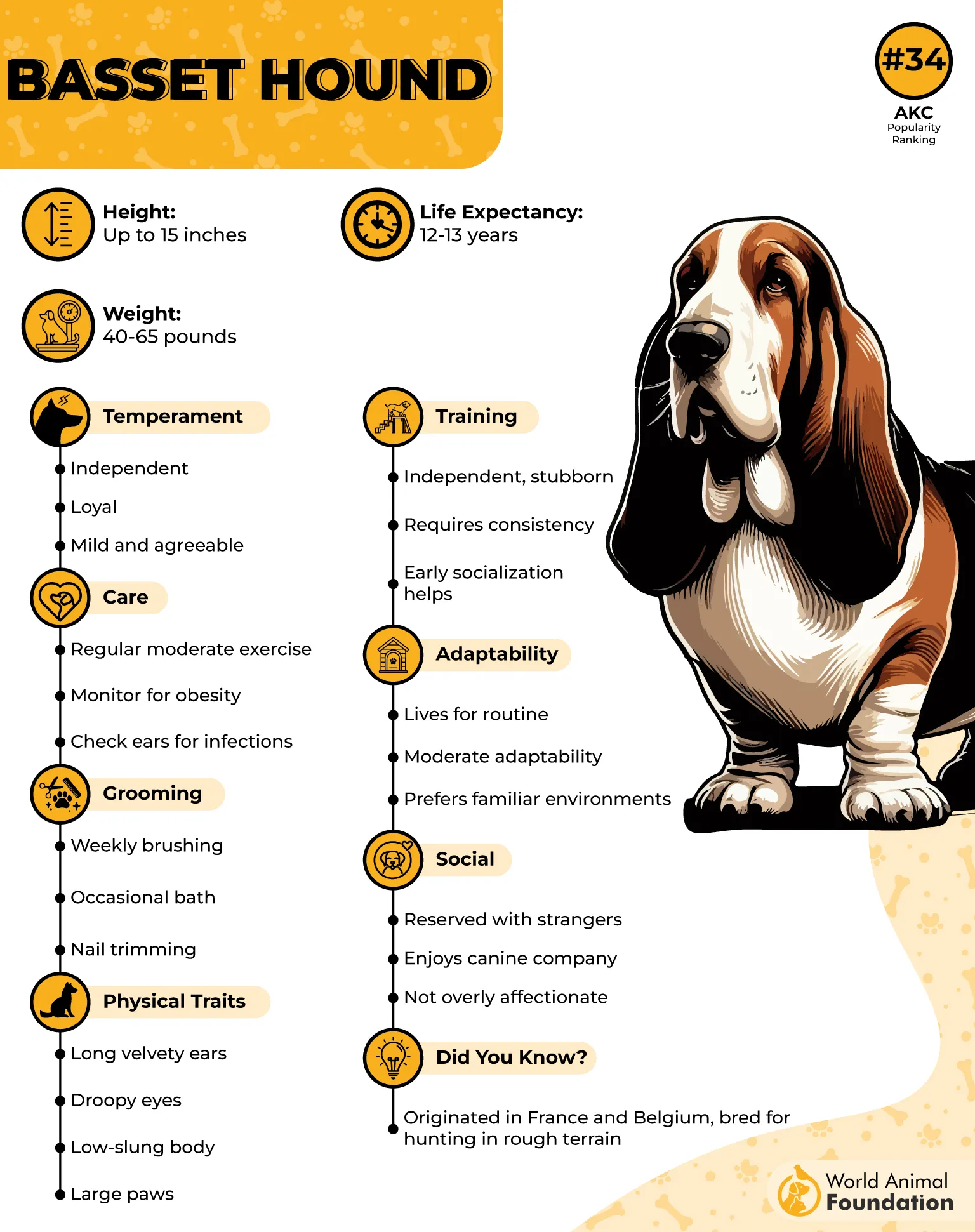
Their long, velvety ears help stir up scent from the ground, and their droopy faces trap it like a scent sponge. Add those stubby legs and low-slung belly, and you’ve got a dog that sniffs with purpose and lounges with passion.
Basset Hounds are commonly susceptible to allergies and seborrhea, which can lead to recurring skin or ear infections. Due to their loose skin and deep folds, they’re also prone to developing bacterial and yeast infections, particularly in those areas.
Bassets are known for their stubborn streak, theatrical sighs, and Oscar-worthy expressions of boredom. While Basset Hounds are naturally laid-back and would happily lounge in their dog bed most of the day, it’s important for pet parents to make sure they get enough exercise to avoid obesity and related health problems, says PetMD.
Being friendly and social, some Basset Hounds struggle when left alone for extended periods and may develop separation anxiety if not given enough attention.
6. Bloodhound
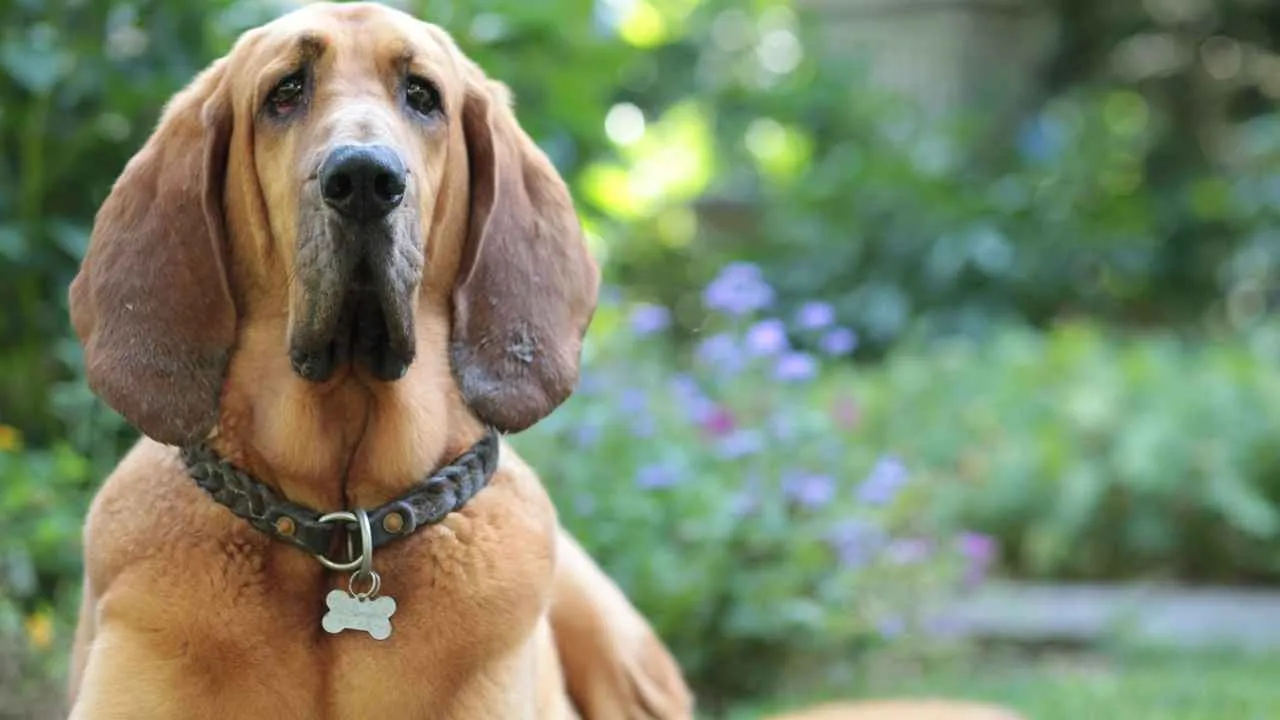
Height: 23–27 inches
Weight: 80–110 pounds
Bloodhounds aren’t just known for their floppy ears—they’re scent-tracking legends. In fact, their tracking results have even been used as evidence in court. That’s right, this large dog has a legal résumé.
Those long, velvety ears and extra wrinkled jowls aren’t just for show—they work together like a scent-capturing system, trapping smells and wafting them directly to the dog’s world-class nose.
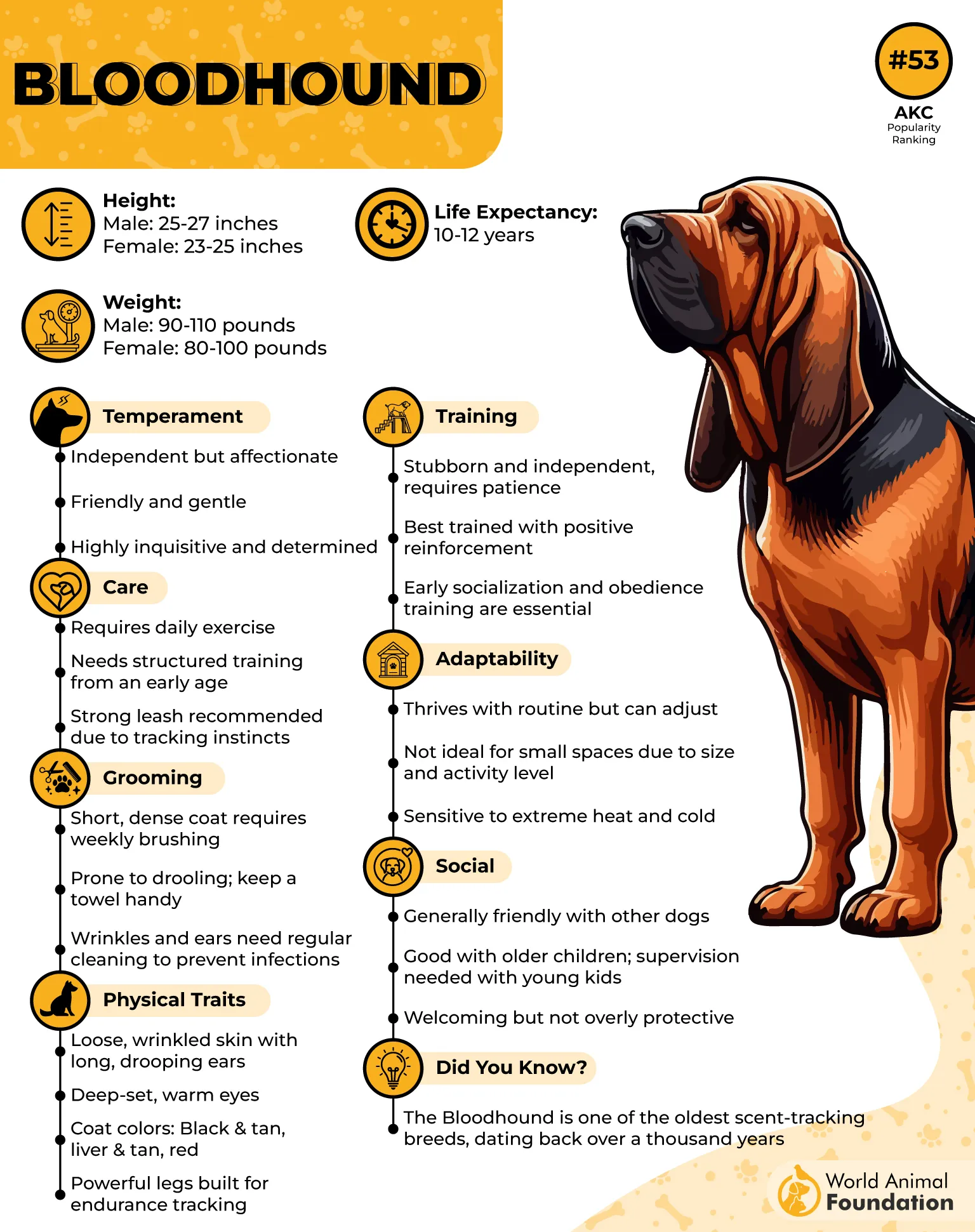
Combine that with their laser focus and stubborn work ethic, and you’ve got a canine private investigator with serious determination (and even more drool).
But when they’re off the clock? Bloodhounds are gentle giants—sweet, a little goofy, and surprisingly sensitive. They bond hard, love kids, and are happiest when following a trail or flopping dramatically across your furniture like a four-legged beanbag.
7. Coonhound
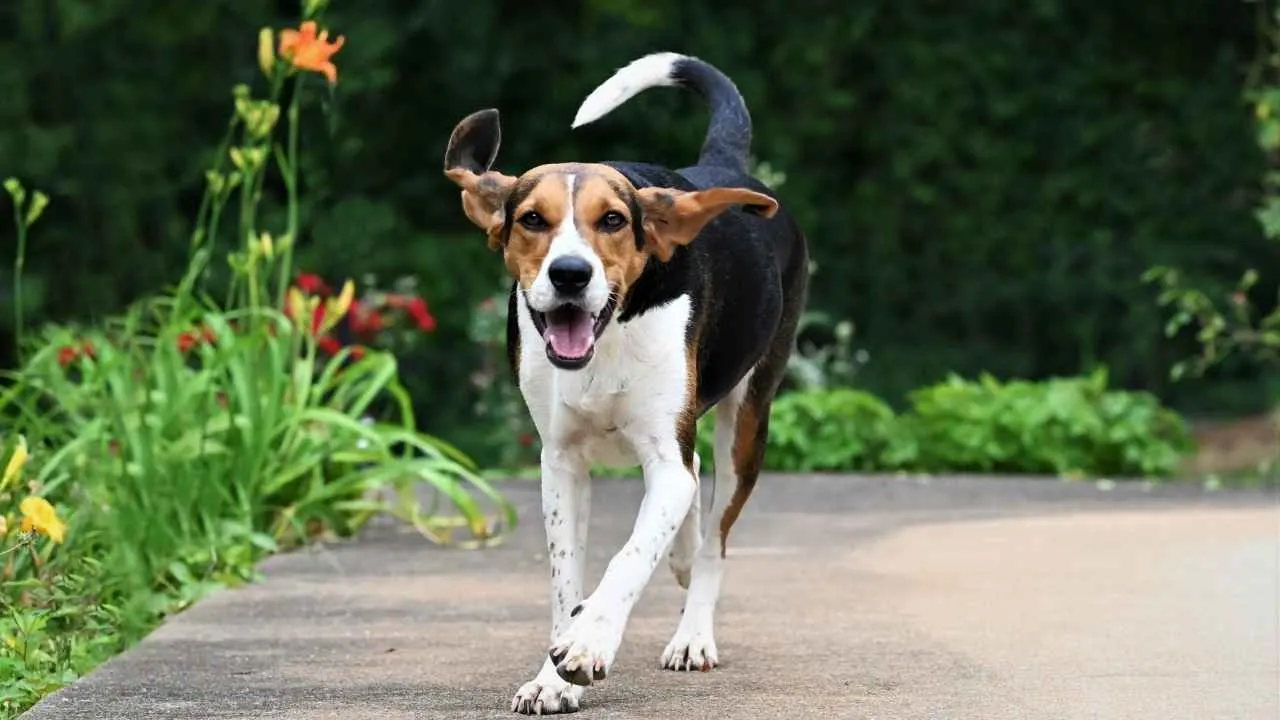
Height: 20–27 inches
Weight: 45–75 pounds
Coonhounds are like the rockstars of the hunting world—sleek, loud, and always ready for a night adventure. Bred to trail raccoons (hence the name) and other game over rugged terrain, these dogs bring the full package: athleticism, bravery, vocal cords that don’t quit, and yes, some glorious, pendulous ears.
Those ears help capture scent as they track, while their baying (a unique hound-style howl) lets you know exactly where they are—even if they’re halfway up a mountain. Coonhounds don’t just track, they announce it with flair.
There are several types of coonhounds—like the Black and Tan, Redbone, Bluetick, and Treeing Walker—but they all share a few things in common: determination, a big voice, and ears that practically drag behind them on the trail.
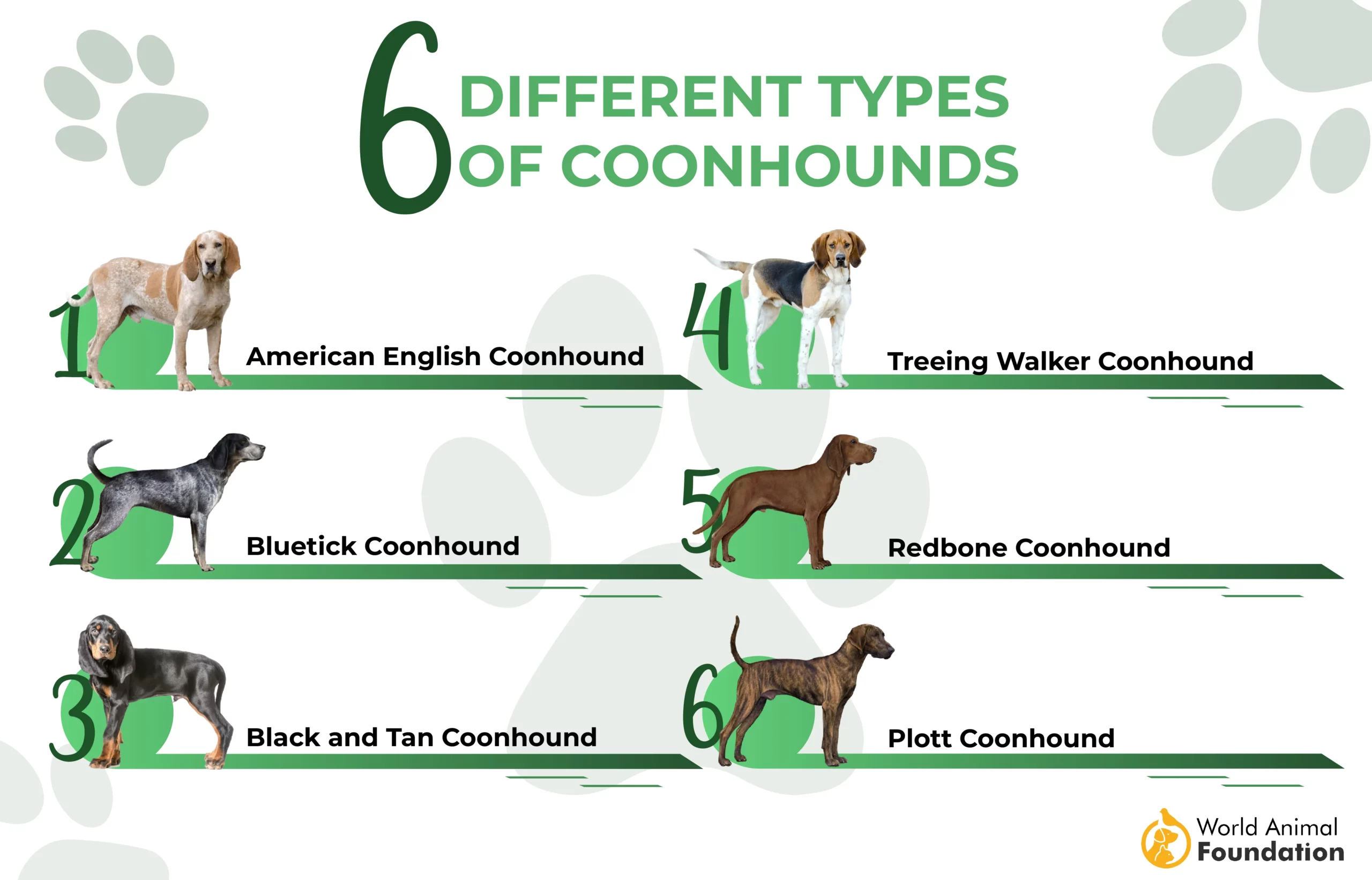
Off-duty, they’re goofy, affectionate, and surprisingly couch-loving—after all, even the hardest workers need a nap. Coonhounds are somewhat open to strangers but have a protective streak that makes them good watchdogs for the home. They adjust well to moderate changes but can struggle with major disruptions.
Coonhounds are susceptible to ear infections due to their long, droopy ears, which can trap moisture and dirt. To help prevent problems, it’s important to regularly clean and check their ears. Signs of infection may include itching, redness, a bad odor, or discharge from the ear.
WebMD says training can be a challenge since they’re not always as eager to please as other breeds. They also have high energy levels that require an active owner to match their pace.
Known for being highly vocal, they have a loud bark that can alert you to anything unusual. Their need for mental stimulation is moderate, so keeping their minds engaged is important but manageable.
Conclusion
Dog breeds with naturally long ears are more than just cute—those drooping ears, also known as pendant ears or hanging ears, serve a purpose, especially in scent hounds like the Afghan Hound, Dachshunds, and English Springer Spaniel. These dogs with long ears often have lush ears, fine hair, and silky hair that sweep the ground, helping stir up scents for the dog’s nose to track.
Whether it’s the elegant breed like the Irish Setter with a red coat and tall frame, or a large breed with short legs and long bodies built for rough terrain, these breeds with long ears have a unique appearance from tip to tail. Their ears are typically set low, or low set, adding to their charming shape, but they also require regular grooming to keep all that fur clean and healthy. So next time you notice a dog’s ears, remember: there’s more than meets the ear—they help dogs hear, hunt, and look fabulous doing it.


